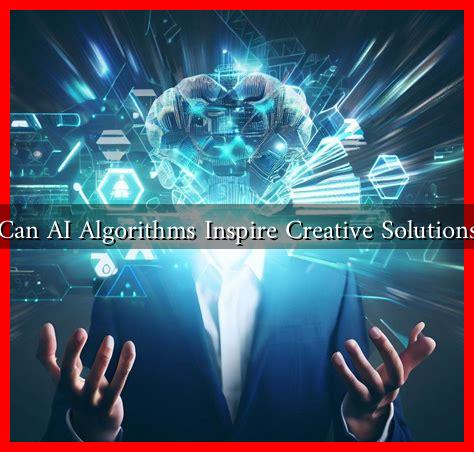-
Table of Contents
Can AI Algorithms Inspire Creative Solutions?
Artificial Intelligence (AI) has rapidly evolved from a niche technology into a transformative force across various industries. One of the most intriguing aspects of AI is its potential to inspire creative solutions. This article explores how AI algorithms can enhance creativity, provide innovative solutions, and even collaborate with human creators to push the boundaries of imagination.
The Intersection of AI and Creativity
Traditionally, creativity has been viewed as a uniquely human trait, characterized by the ability to generate novel ideas and solutions. However, AI algorithms, particularly those based on machine learning and deep learning, are increasingly demonstrating capabilities that challenge this notion. Here are some ways AI is intersecting with creativity:
- Data-Driven Insights: AI can analyze vast amounts of data to identify patterns and trends that humans might overlook. This capability can lead to innovative solutions in fields such as marketing, product design, and even art.
- Generative Design: In architecture and product design, AI algorithms can generate multiple design options based on specific parameters, allowing designers to explore a wider range of possibilities.
- Collaborative Creativity: AI tools can work alongside human creators, providing suggestions and enhancements that can lead to more refined and innovative outcomes.
Case Studies: AI in Action
Several notable examples illustrate how AI algorithms have inspired creative solutions across different domains:
1. Art and Music
AI has made significant strides in the creative arts. For instance, the AI program AIVA (Artificial Intelligence Virtual Artist) composes original music by analyzing existing compositions. AIVA has been used to create soundtracks for films and video games, showcasing how AI can contribute to the creative process. Similarly, artists like Refik Anadol use AI to create stunning visual art installations that blend technology and creativity.
2. Marketing and Advertising
In the marketing sector, companies like Coca-Cola have utilized AI to analyze consumer behavior and preferences. By leveraging AI algorithms, Coca-Cola developed personalized marketing campaigns that resonate with specific target audiences. This data-driven approach not only enhances creativity but also improves engagement and conversion rates.
3. Product Development
In the realm of product design, Autodesk’s generative design software allows engineers to input design goals and constraints. The software then generates a multitude of design alternatives, enabling engineers to explore innovative solutions that may not have been conceived through traditional design methods. This approach has been used in industries ranging from automotive to aerospace.
The Role of AI in Problem-Solving
AI’s ability to inspire creative solutions extends beyond artistic endeavors. It plays a crucial role in problem-solving across various sectors:
- Healthcare: AI algorithms analyze patient data to identify potential treatment options, leading to personalized medicine and improved patient outcomes.
- Environmental Solutions: AI is used to model climate change scenarios and develop strategies for sustainability, such as optimizing energy consumption in smart cities.
- Finance: In finance, AI algorithms detect fraudulent activities by analyzing transaction patterns, thereby enhancing security and trust in financial systems.
Challenges and Ethical Considerations
While the potential for AI to inspire creativity is vast, it is essential to address the challenges and ethical considerations that accompany its use:
- Bias in Algorithms: AI systems can perpetuate existing biases present in the data they are trained on, leading to skewed or unfair outcomes.
- Intellectual Property Issues: The question of ownership arises when AI generates creative works. Who owns the rights to an artwork created by an algorithm?
- Dependence on Technology: Over-reliance on AI could stifle human creativity, as individuals may become less inclined to think outside the box.
Conclusion
AI algorithms have the potential to inspire creative solutions across various fields, from art and music to healthcare and environmental sustainability. By analyzing data, generating innovative designs, and collaborating with human creators, AI is reshaping the landscape of creativity. However, it is crucial to navigate the challenges and ethical considerations that accompany this technology. As we continue to explore the intersection of AI and creativity, the possibilities for innovation are boundless.
For further reading on the impact of AI on creativity, you can explore resources from Forbes.


